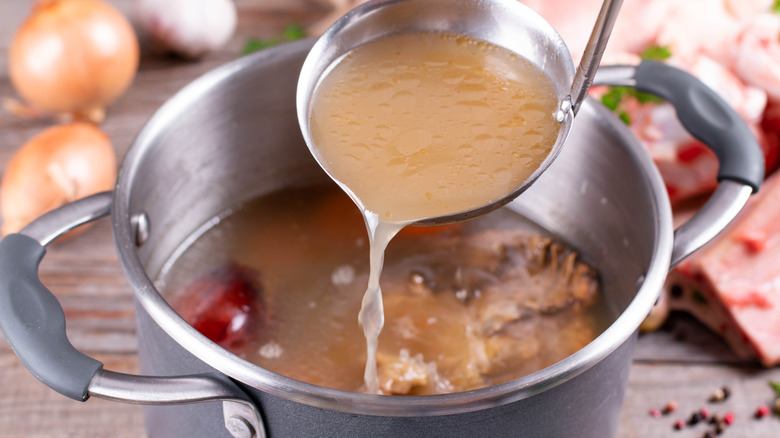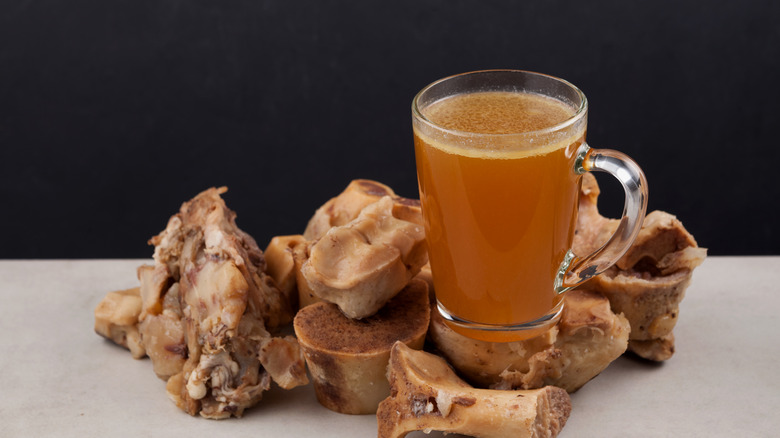Why You Should Always Roast The Bones You're Using For Broth
If you get your meat from your local butcher, you're almost always getting it with the bones still in it. While some people would prefer the bones to be removed or given to their dogs to chew on, others actually use them to make bone broth. If you've never heard of bone broth before, Michael Ruhlman, co-author of "The French Laundry Cookbook," tells the Los Angeles Times that it is really just a fancy way of saying stock, except the bones of the animal are simmered in it.
Although your average pot of everyday beef stock may be more or less similar to an expensive cup of bone broth preparation-wise, this doesn't mean that bone broth is not without its benefits. Food Network explains that it has a much richer flavor than your average stock and may provide some impressive nutritional value (although this is said in the same manner that chicken soup is known for curing colds). Moreover, adding bones to stock, such as neckbones or the spines, helps provide a richer flavor. Once your bone broth is finished, there is a wide variety of applications you can do with it, from adding it to meat-based dishes or sipping it just like that (via Babish Culinary Universe).
If you go about making your own bone broth, be it beef or chicken, you must always roast the bones first. But why do that, you wonder? What does roasting your bones actually achieve?
Roasting your bones gives them more flavor
Roasting your bones does give them a pretty nice golden-brown color, sure, but since you're not exactly eating the things, it's safe to say you're not roasting them for their appearance. What you're really roasting them for, Food Above Gold explains, is to get more flavor out of them. By simply placing the bones of your choice in an oven set to 425 degrees Fahrenheit for 30 minutes, you can get a deeper flavor from them while they boil in your stock. This is because the roasting process caramelizes the bone marrow while also helping draw out the collagen in the bones to give your broth a thicker, more gelatinous texture. Consider it like searing a steak until all sides have a golden brown crust — an optional but completely welcome step in the cooking process.
Another key mistake one may make when making bone broth at home is skipping what is known as the blanching step. As Rouxbe tells us, this involves covering the bones in cold water and then slowly bringing them to a boil. As the water boils, impurities from the bones rise to the surface, which you need to skin off. This act of "purification" helps remove that cloudy appearance you may find in homemade stocks. While some believe that blanching removes valuable nutrients, sources such as The Whole Portion assure us this isn't the case.

